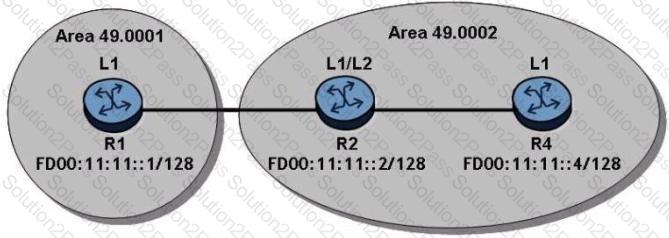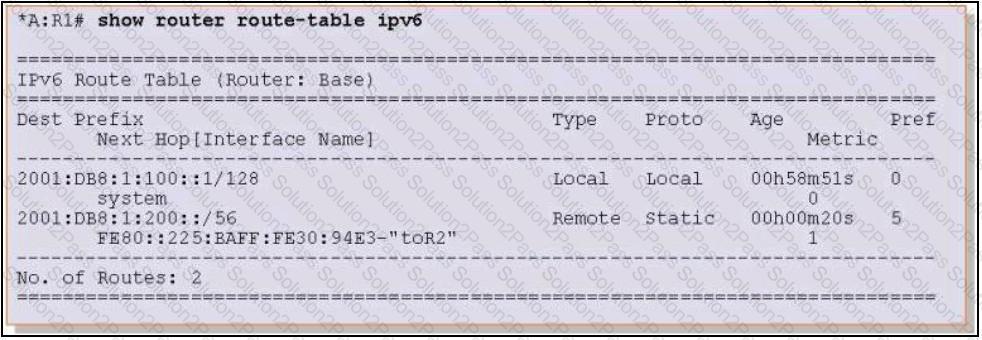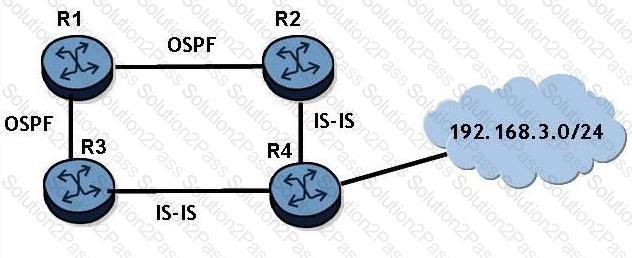4A0-101 Nokia Alcatel-Lucent Interior Routing Protocols and High Availability Free Practice Exam Questions (2025 Updated)
Prepare effectively for your Nokia 4A0-101 Alcatel-Lucent Interior Routing Protocols and High Availability certification with our extensive collection of free, high-quality practice questions. Each question is designed to mirror the actual exam format and objectives, complete with comprehensive answers and detailed explanations. Our materials are regularly updated for 2025, ensuring you have the most current resources to build confidence and succeed on your first attempt.
Refer to the exhibit below. IS-IS IPv6 routing is configured in the network with globally routed addresses as shown. How many routes will R4 have in its IPv6 route table?

Click the exhibit button.

Router 2 advertises the network 192.168.3.0/24 to router R1 via IS-IS.
How can router R1 ensure that it discards the route?
The exhibit shows a route to 2001:DB8:1:200::/56 in the IPv6 route table. How did the route get into the route table?

Which of the statements about the output in the exhibit is FALSE?

Click the exhibit button.

Router R2 advertises the network 192.168.3.0/24 to router R1 via RIP.
How can router R1 ensure that it discards the route?
On which type of IS-IS router is summarization most likely to be configured?
How are LSPs acknowledged on IS-IS broadcast links?
Which of the following is not one of the MT topologies defined for IS-IS?
Which of the following LSA types stay within an OSPF area, and are not flooded outside of the area? Choose two answers.
If routers R1 and R2 have a Level 1 and Level 2 IS-IS adjacency, which of the following statements are true? Choose two answers.
Which of the following statements best describes the function of an OSPF Type 4 LSA?
Click the exhibit button.
Which of the following statements best describes the format of data traffic sent from the PC to the server?
Which one of the following is a valid IPv6 multicast address?
Which part of the NSAP address is used to indicate to the end system that a packet is to be processed by the router itself?
Which of the following statements are true? Choose two answers.
Which of the statements below best describes the operation of the IPv6 anycast address?
Click the exhibit button.

If router R2 redistributes the IS-IS route to 192.168.3.0/24 into OSPF, router R3 will receive two routes to 192.168.3.0/24. What will be the preference of these two routes? Assume that all IS-IS routers are L1/L2 capable and are in the same area. Choose two answers.
Which of the following statements concerning OSPFv3 is false?
Which of the following statements regarding link state protocols are true? (Choose two)
What value should the AFI be set to for locally administered addressing?
